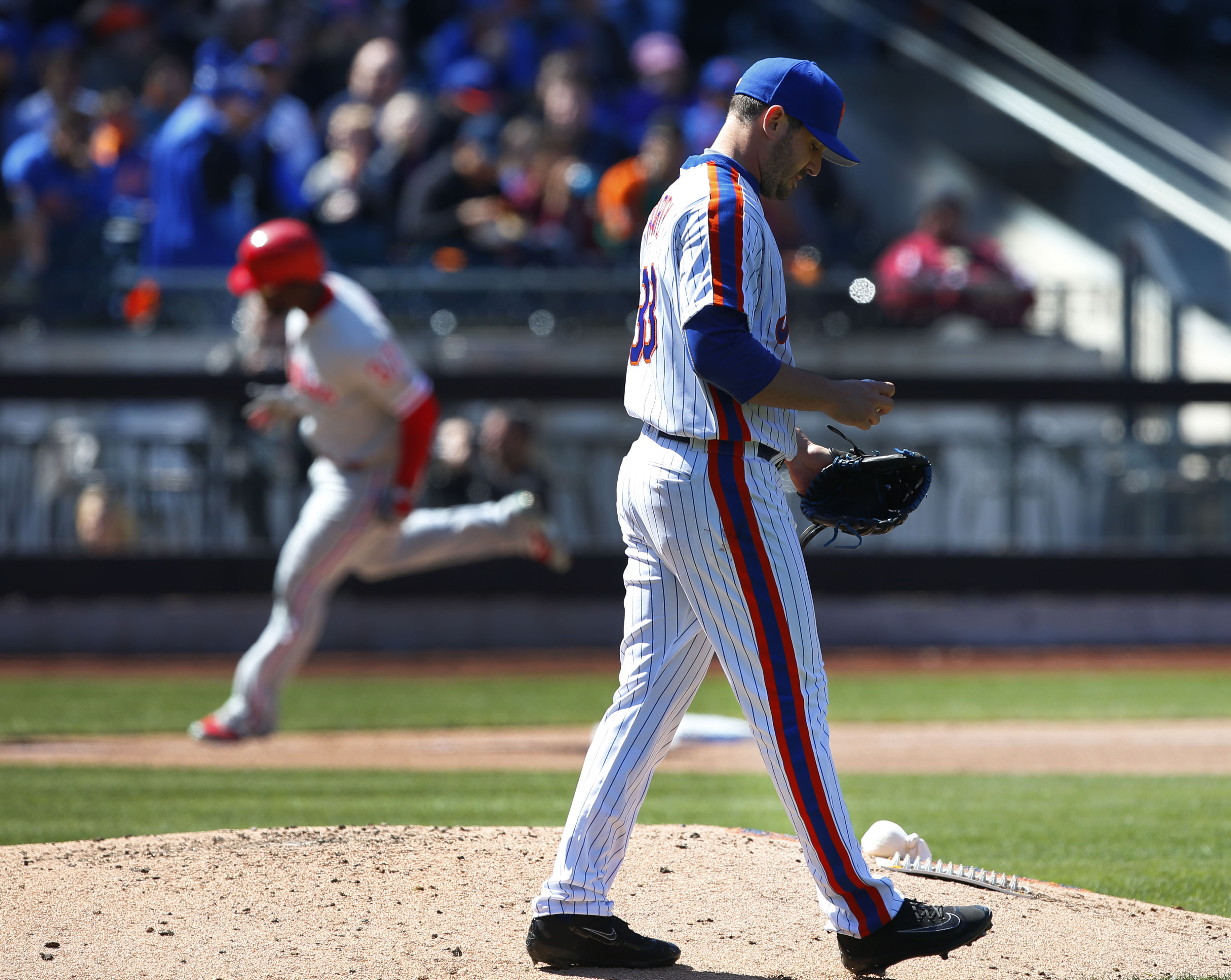There is nothing more mind-numbing in baseball than hand-wringing about statistics in early April. Or mid-April. Or late-April. It’s all mostly hogwash.
The Mets, more than most teams, are burdened by such reality. Maybe it’s the fan base that can occasionally skew towards Chicken Little hot takes or the immense media glob that covers them that can do it too. With this, the vagaries of baseball really get underlined. There may be nothing more destructive or uplifting for a baseball team or player’s narrative than April.
Just look at the Mets so far. What can you make of their offensive production so far? They rank 16th in the majors in runs per game as of Wednesday morning, despite a stone-cold start to the season. Then came the awakening in Cleveland and Philadelphia. Now all is right again, right?
The Mets were woebegone over the first two weeks of the season. They have scored two runs or fewer four times already in their first 13 games. David Wright was supposed to be in an existential struggle just one series into the season. Yoenis Cespedes even got booed.
It was just last week when Sandy Alderson had to quell the panic after manager Terry Collins managed a win over the Marlins like it was October.
“We need to get into the season, get into a routine and not a routine of getting three or four hits a night and putting the kind of pressure we have put on the starting pitching and the bullpen that we have the first week,” the GM told the New York Post. “But that will come around.”
The recent power surge isn’t reflective of the Mets either. The shellacking of the Phillies Tuesday is as much a mirage as the power outage against them at Citi Field. But it speaks to the topsy-turvy nature of April and the numbers it produce. Hitting coach Kevin Long preaches process and the underlying numbers for the Mets suggest that luck hasn’t been in their favor.
As of Wednesday, they ranked 25th in line drive percentage but sixth in hard-hit percentage, with 32.7 of their balls in play earmarked that way. Their batting average on balls in play, .274, reflects the disconnect between process and results–their mark is good for ninth-worst in baseball.
Unlike last season, when Long was adamant the offense would come around, this year’s lineup isn’t composed of Eric Campbell and Darrell Ceciliani. The depth that Alderson built up in the offseason and the track record behind it belies the early production.
And there have been signs of promise too, so far. Michael Conforto has continued his rapid assimilation to the major leagues. He’s already found a notch in the third spot of the lineup and proven to be the threat the Mets hoped he could be. One Mets coach said last year he thought Conforto had a more powerful swing than any other slugger on the team–and that was right in the midst of Yoenis Cespedes’ home run binge last August.
All of this is a backdrop, of course, to the real strength of the Mets–their mighty rotation. Noah Syndergaard is quickly developing into the most unhittable pitcher in baseball–at least that’s been the case so far. And the rotation has been without Jacob deGrom for the last week and the real Matt Harvey all month. Harvey’s struggle–hitters are making contact against at him a career-high rate–remains a more confusing threat than any offensive mishaps.
But that could all change quickly too. That’s the mystery of the season’s first month and the illusions it casts. It’s too early to understand if the numbers are just a momentary divergence or a trend that’s about to become truth. Such are the vagaries of April.
Photo Credit: Noah K. Murray-USA TODAY Sports
